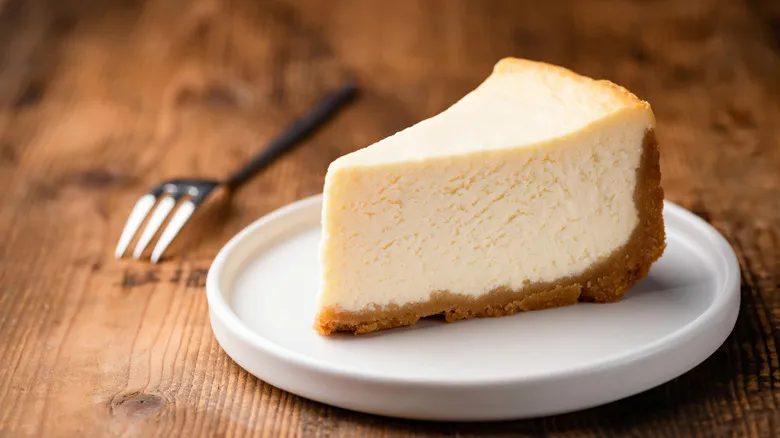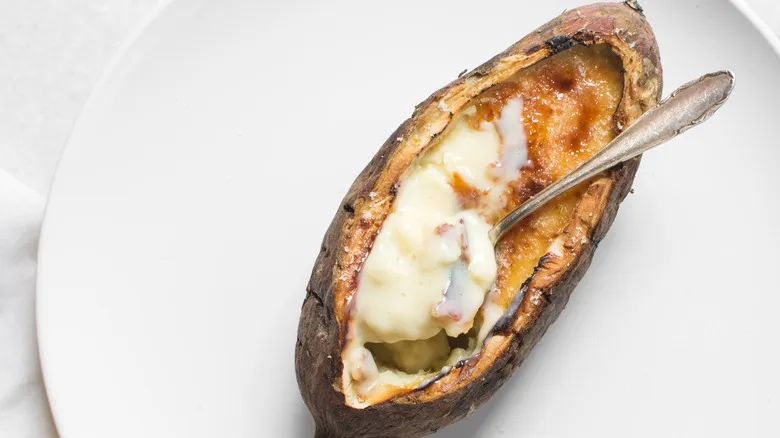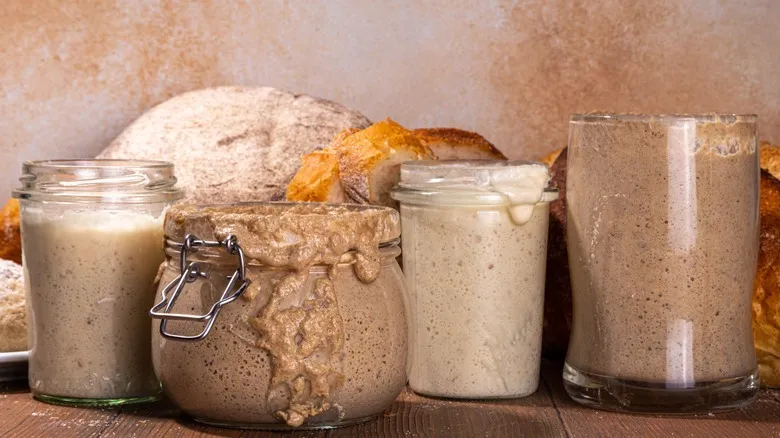Why you should use two types of flour for sourdough starter

The most successful sourdough starters utilize a 50/50 mixture of whole grain flour and white flour. To grasp the distinction between the two, we need to examine the composition of grains. A grain kernel consists of three components: at its core is the germ, which is the plant's seed. Encasing the germ is the endosperm, a dense layer primarily made up of carbohydrates that acts as the plant's energy reserve. Finally, there is the bran, which is the tough outer layer of the kernel.
Whole wheat flour incorporates all parts of the grain kernel, whereas white flour is derived solely from the endosperm. White flours encompass both all-purpose flour and bread flour, while whole grain flours include whole wheat and rye. Each type offers unique advantages for sourdough baking. Whole grain flours provide more nutrients for yeast and bacteria, while white flours excel at creating a robust gluten structure.
Combining whole grain and white flours is particularly crucial when starting your sourdough culture. Whole grains are rich in nutrients and enzymes that promote yeast growth. Additionally, using rye flour for the whole grain component can accelerate the development of your starter. Rye flour contains a broader spectrum of nutrients compared to wheat, leading to quicker maturation of starters made with it.
How flour affects flavor

One could argue that the most significant influence of your flour selection lies not in the speed at which the starter develops or the loaf's structure, but rather in its flavor. The choice of flour plays a crucial role in determining the taste of a sourdough loaf. Generally speaking, whole grain flours contribute more flavor than their white counterparts.
A sourdough starter made exclusively with white flour tends to have a very subtle flavor profile. A mature white flour starter will emit a faintly tangy aroma. However, due to the lack of other robust flavors, that tanginess will dominate the final loaf. While it won't be particularly sour, it also won't offer much in terms of flavor complexity. In contrast, a starter made solely from whole wheat will present a much more pronounced aroma and a sharper sour taste. Along with increased tanginess, whole wheat introduces sweet, nutty, and malty undertones, resulting in a richer flavor experience.
Rye flour stands out as the most intriguing option, as its flavor is distinctly different from any wheat variety. If you appreciate a bold rye taste, consider incorporating it into both your starter and final loaf. However, if you prefer a subtler rye flavor, you can use it in your starter while opting for other flours in the final loaf. Finding the right flour combination may require some experimentation, but with determination, you'll discover the blend that suits your palate best.
Recommended

Swap The Water In Your Focaccia With Marinara Sauce And Never Look Back

The One Minute Trick To Make Store-Bought Cookies Seem Fresh

The Oven Hack To Guarantee A Moist Cheesecake Every Single Time

Reinvent Your Crème Brûlée By Making It Inside A Sweet Potato
Next up

